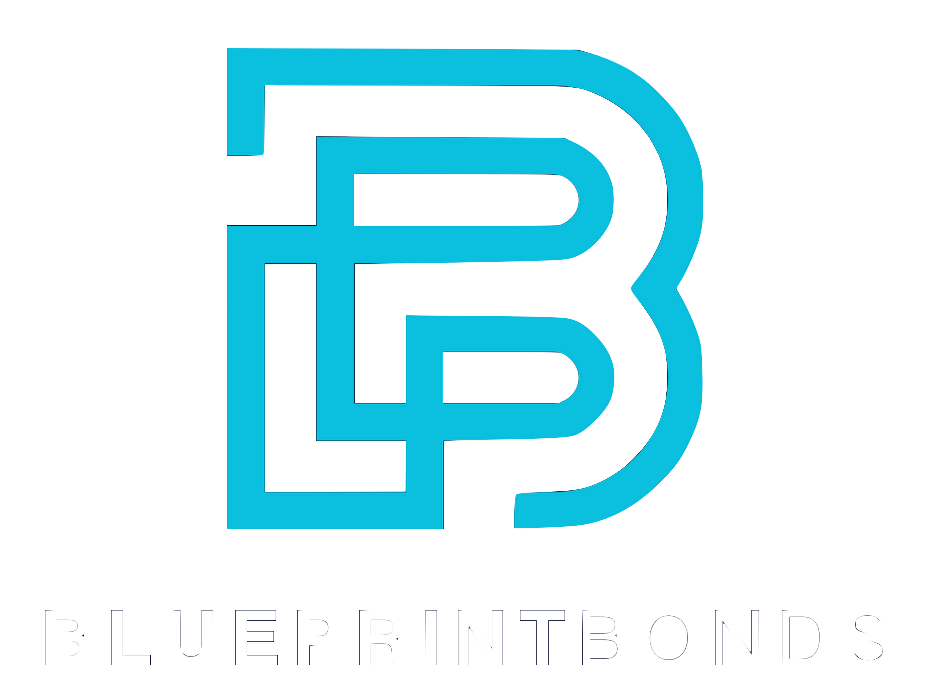Looking back over the past decade, the bond market has evolved in ways that few could have fully anticipated. For investors and market watchers alike, understanding the nuances of bonds—from market size and yield trends to regulatory changes and technological advances—has become more important than ever. The global bond market, valued at about $141.34 trillion in 2024, is expected to grow steadily to $166.81 trillion by 2030, reflecting ongoing shifts in investor behavior and economic conditions. For those who missed the signs or underestimated the complexities, the lessons are clear.
One key insight is the rising appetite for higher returns, which has propelled the high-yield bond segment to new heights. As experts from Research and Markets point out, this trend is reshaping portfolio strategies worldwide.
Understanding Market Growth and Its Drivers
Ten years ago, few anticipated just how large and dynamic the bond market would become. The steady expansion to an estimated $166.81 trillion by 2030 is driven by multiple factors, including global economic growth, demographic shifts, and evolving investor preferences. The compound annual growth rate of 2.8% might seem modest, but it compounds to significant scale over time.
One major driver behind this growth is the surge in corporate borrowing. In early 2025, U.S. companies set a remarkable record by raising $83.4 billion in dollar bond sales by January 8 alone. This was the highest year-to-date borrowing level since 1990, signaling strong confidence in debt markets despite broader economic uncertainties. This trend underscores how corporations increasingly rely on bond issuance to finance operations and growth, a fact that was less obvious a decade ago.
For anyone investing in bonds, recognizing the scale and momentum of corporate issuance is critical. It affects liquidity, pricing, and risk profiles. The record borrowing activity also reflects the broader economic environment where interest rates, credit quality, and investor demand interact in complex ways. Moreover, as companies navigate challenges such as inflationary pressures and supply chain disruptions, their reliance on bond markets for capital becomes even more pronounced, illustrating the bond market's role as a barometer for corporate health and economic sentiment.
The Rise of High-Yield Bonds
High-yield bonds, often referred to as junk bonds, have gained traction as investors seek better returns amid low-interest-rate environments. The high-yield market is projected to reach $7.76 trillion by 2032, growing at a faster CAGR of 4.3% compared to the overall bond market. This segment appeals to those willing to accept higher risk for the prospect of enhanced income.
The increasing investor preference for higher returns is a key factor driving this growth. As traditional fixed-income instruments offer lower yields, high-yield bonds fill the gap, attracting a broader base of investors. However, this comes with heightened credit risk and volatility, making it essential to understand the underlying fundamentals of issuers and market conditions. Investors are now more than ever encouraged to conduct thorough due diligence and consider diversification strategies to mitigate potential risks associated with these higher-yielding assets.
Investors who overlooked high-yield bonds or dismissed them as too risky ten years ago may now find themselves missing out on a significant opportunity. The evolving market dynamics demand a more nuanced approach to risk and return trade-offs. Additionally, the rise of technology and data analytics has empowered investors to better assess the creditworthiness of issuers, enabling a more informed decision-making process. As a result, the high-yield market is not only expanding in size but also becoming increasingly sophisticated, attracting institutional investors who once shied away from this segment due to perceived risks.
Technological Advances and Market Modeling
Bond markets have traditionally been viewed as less technology-driven compared to equities, but recent innovations are changing that perception. A notable development is the application of advanced machine learning techniques to bond spread prediction, particularly in niche areas like catastrophe (CAT) bonds.
A recent study titled "CATNet: A geometric deep learning approach for CAT bond spread prediction in the primary market" introduces a novel framework that models the CAT bond market as a graph. This approach has significantly outperformed traditional models, offering more accurate pricing and risk assessment tools. This kind of innovation was not mainstream a decade ago but is now reshaping how investors and issuers approach bond valuation.
Moreover, agent-based models simulating market-maker interactions have shed light on liquidity dynamics in government bond markets. Research like "Decoding OTC Government Bond Market Liquidity: An ABM Model for Market Dynamics" demonstrates that diversity among market participants enhances liquidity and stability. These insights help explain fluctuations in bond market liquidity and guide better trading strategies.
In addition to these advancements, the integration of blockchain technology into bond issuance and trading is gaining traction. Blockchain offers a transparent and immutable ledger that can streamline the entire lifecycle of a bond, from issuance to settlement. This not only reduces operational costs but also enhances security and trust among participants. As more financial institutions explore the potential of tokenized bonds, we may see a shift in how bonds are traded, potentially leading to a more efficient market.
What This Means for Investors
Technological advances mean that bond investors now have access to more sophisticated tools for risk management and pricing. Understanding these tools and the data behind them can provide a competitive edge. It also highlights the importance of staying informed about market innovations and integrating them into investment decisions.
Furthermore, the rise of data analytics platforms allows investors to harness vast amounts of market data, enabling them to make more informed decisions. With real-time analytics, investors can track market trends, assess credit risk, and evaluate macroeconomic indicators that impact bond performance. This level of insight was previously reserved for institutional investors with significant resources, but now, smaller investors can leverage these tools to enhance their investment strategies and respond quickly to market changes.
Sustainable Bonds and Changing Issuance Patterns
One of the most significant shifts in bond markets over the past decade is the rise of sustainable finance. Sustainable bonds, which include green, social, and sustainability-linked bonds, accounted for 28% of new global issuance in 2023, up from 21% in 2021. Europe leads this trend, representing 45% of global issuance.
This growth reflects increasing investor demand for products that align with environmental, social, and governance (ESG) criteria. Issuers are responding by incorporating sustainability goals into their funding strategies, making these bonds a vital part of the fixed-income landscape. The surge in sustainable bonds is not just a passing trend; it is indicative of a broader shift in capital allocation towards projects that promise long-term societal benefits, such as renewable energy, affordable housing, and healthcare initiatives. As more investors prioritize ethical considerations alongside financial returns, the market for sustainable bonds is expected to expand even further, potentially reshaping the entire investment ecosystem.
For investors, sustainable bonds offer a way to support positive impact while diversifying portfolios. However, assessing the credibility and impact of these bonds requires careful due diligence. The rapid growth in this sector also means standards and disclosures are evolving, making transparency a key consideration. Various third-party organizations have emerged to provide ratings and certifications for sustainable bonds, helping investors navigate this complex landscape. Yet, the challenge remains in ensuring that these ratings accurately reflect the environmental and social benefits claimed by issuers, as greenwashing becomes a growing concern in the industry.
Regulatory Changes Impacting Corporate Bonds
Regulatory frameworks have tightened in recent years, especially in the U.S. The Securities and Exchange Commission (SEC) introduced enhanced corporate bond disclosure standards in 2025. These new rules affect around 20% of new issuers, aiming to improve transparency and investor protection.
Such regulatory developments can influence market behavior, issuance patterns, and investor confidence. Ten years ago, these standards were less stringent, and many bond investors might have underestimated the importance of disclosure quality. Today, understanding regulatory changes is essential for evaluating bond risks and opportunities. The increased scrutiny on corporate disclosures not only aims to protect investors but also encourages companies to adopt more responsible business practices. As firms navigate these new regulations, they may find themselves under pressure to enhance their sustainability reporting, leading to a more informed investor base that can make better decisions. This evolution in corporate governance and accountability could ultimately foster a more resilient bond market, where the alignment of financial and ethical interests becomes the norm rather than the exception.
Key Takeaways for Bond Investors
Reflecting on the past decade, several lessons stand out for anyone involved in bonds:
- Market Size and Growth Matter: The bond market’s massive scale and steady growth create both opportunities and challenges. Staying aware of issuance trends, especially in corporate bonds, helps in navigating liquidity and pricing.
- High-Yield Bonds Are Not Just for Speculators: The expanding high-yield market offers attractive returns but requires careful risk assessment and portfolio balance.
- Technology Is Changing the Game: Advances in machine learning and market modeling provide new tools for understanding bond spreads and liquidity, which can improve investment decisions.
- Sustainability Is Here to Stay: Sustainable bonds are reshaping issuance patterns and investor priorities. Knowing how to evaluate these instruments is crucial.
- Regulatory Awareness Is Essential: Enhanced disclosure standards improve transparency but also require investors to stay informed about compliance and reporting changes.
Investors who grasp these dynamics are better positioned to build resilient, diversified fixed-income portfolios that respond to evolving market conditions. Additionally, understanding the impact of macroeconomic factors, such as interest rate fluctuations and inflation trends, is vital. For instance, rising interest rates can lead to declining bond prices, making it essential for investors to monitor central bank policies and economic indicators closely. This awareness can inform decisions about duration and credit quality, allowing investors to adjust their strategies proactively.
Furthermore, the rise of digital platforms and robo-advisors has democratized access to bond investing, making it easier for retail investors to participate in this space. These platforms often provide valuable analytics and insights, enabling investors to make informed choices without requiring extensive market knowledge. As the landscape continues to evolve, leveraging these technological advancements can enhance investment strategies and lead to better outcomes in the bond market.
Frequently Asked Questions About Bonds
Q: What is driving the growth of the global bond market?
A: Economic expansion, corporate borrowing, and investor demand for fixed income are key drivers. The market is projected to grow to $166.81 trillion by 2030. This growth is also fueled by the increasing need for governments and corporations to finance infrastructure projects and operational expansions, particularly in emerging markets. As these regions develop, they require substantial capital, which is often raised through bond issuance. Additionally, the aging population in many developed countries is leading to a higher demand for stable income sources, further propelling the bond market's growth.
Q: Why are high-yield bonds becoming more popular?
A: Investors seek higher returns amid low interest rates, making high-yield bonds attractive despite their higher risk. These bonds, often referred to as "junk bonds," offer yields that can be significantly higher than those of investment-grade bonds, appealing to those looking to maximize their returns. Furthermore, with the current economic climate characterized by fluctuating interest rates and inflation concerns, many investors are willing to accept the additional risk associated with high-yield bonds in exchange for the potential of greater rewards. This trend has led to an increase in the issuance of high-yield bonds, as companies take advantage of favorable market conditions to raise capital.
Q: How do sustainable bonds differ from traditional bonds?
A: Sustainable bonds fund projects with environmental or social benefits and have grown to represent over a quarter of new issuance globally. These bonds are specifically designed to support initiatives such as renewable energy, affordable housing, and sustainable agriculture, aligning with the growing investor focus on corporate social responsibility. The rise of sustainable investing reflects a broader shift in market sentiment, where investors increasingly prioritize ethical considerations alongside financial returns. As a result, many issuers are now incorporating sustainability metrics into their bond offerings, making it easier for investors to align their portfolios with their values.
Q: What impact do new SEC disclosure rules have on bond investors?
A: Enhanced disclosure improves transparency, helping investors better assess risks and issuer credibility. The new rules require issuers to provide more detailed information about their financial health and risk factors, which can significantly influence investment decisions. This increased transparency not only aids investors in making informed choices but also helps to foster greater trust in the bond market as a whole. As investors gain access to more comprehensive data, they can better evaluate the creditworthiness of issuers, leading to a more efficient market where capital is allocated to the most deserving projects.
Q: Can technology improve bond market investing?
A: Yes. Machine learning and advanced models help predict bond spreads and understand market liquidity, aiding investment decisions. Innovations in fintech have transformed the way investors analyze bond data, allowing for real-time insights and more sophisticated risk assessments. Algorithms can now process vast amounts of market data to identify trends and anomalies that human analysts might miss. Additionally, blockchain technology is being explored for its potential to streamline bond issuance and trading processes, enhancing efficiency and reducing costs for both issuers and investors. As technology continues to evolve, it is likely to play an increasingly pivotal role in shaping the future of bond market investing.
Q: Is the bond market still a safe investment?
A: Bonds vary widely in risk. Understanding market trends, credit quality, and regulatory changes is key to managing safety and returns. While government bonds are often considered low-risk, corporate bonds can carry varying levels of risk depending on the issuing company's financial health. Moreover, the current economic landscape, characterized by rising inflation and interest rate fluctuations, poses additional challenges for bond investors. As a result, it is essential for investors to conduct thorough due diligence and remain informed about macroeconomic indicators that could impact bond performance. Diversifying bond holdings across different sectors and credit qualities can also help mitigate risk and enhance overall portfolio stability.
Before You Go
Looking back, the bond market’s evolution offers valuable lessons for investors today. The interplay of growth, risk appetite, technology, sustainability, and regulation shapes opportunities and challenges. Staying informed and adaptable is the best way to navigate this complex landscape. Whether you are new to bonds or revisiting your strategy, these insights can help you make smarter choices for the decade ahead.




